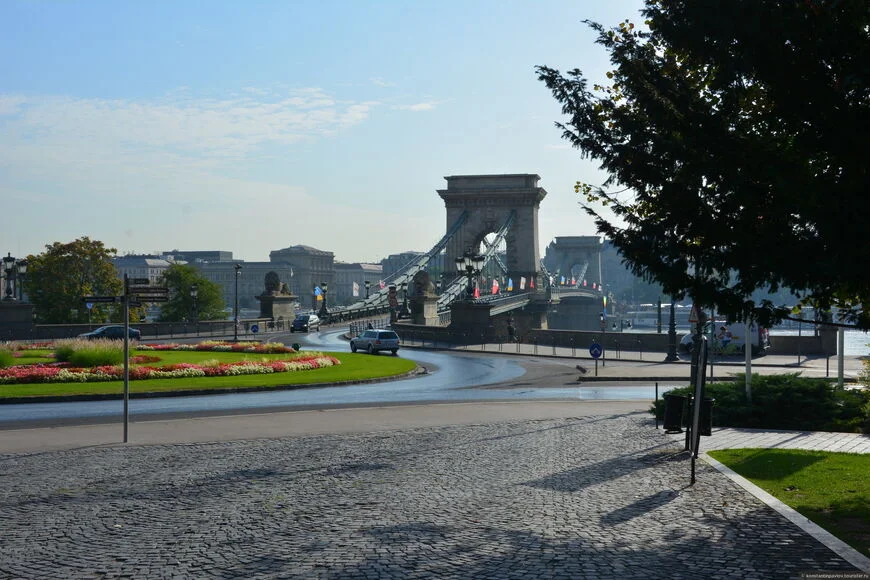The Szechenyi Chain Bridge was the first suspension bridge across the Danube River in Budapest. It is a symbol of the Hungarian capital, as it connects two cities, Buda and Pest, which merged together in 1872.
 |
| Szechenyi Chain Bridge Budapest Hungary |
The construction of the bridge was financed by Count Istvan Szechenyi (sometimes the surname is pronounced as Széchenyi), after whom it was named. The project was developed by British engineer William Tierney Clark, and Scottish engineer Adam Clark supervised the construction. The square in the part of Buda, on which the bridge opens, was named after him. The other end of the bridge rests on Roosevelt Square in the part of Pest. The chain bridge is called because of the iron chains that hold the roadbed and are supported by two river piers 48 meters long.
 |
| Szechenyi Chain Bridge Budapest Hungary |
The bridge, 375 meters long and 14.8 meters wide, was opened in 1849 after 10 years of construction. In 1852, lions by the sculptor Janos Marshalko were installed at each entrance. During the Second World War, the bridge was destroyed, and the reconstruction was completed in 1949.
